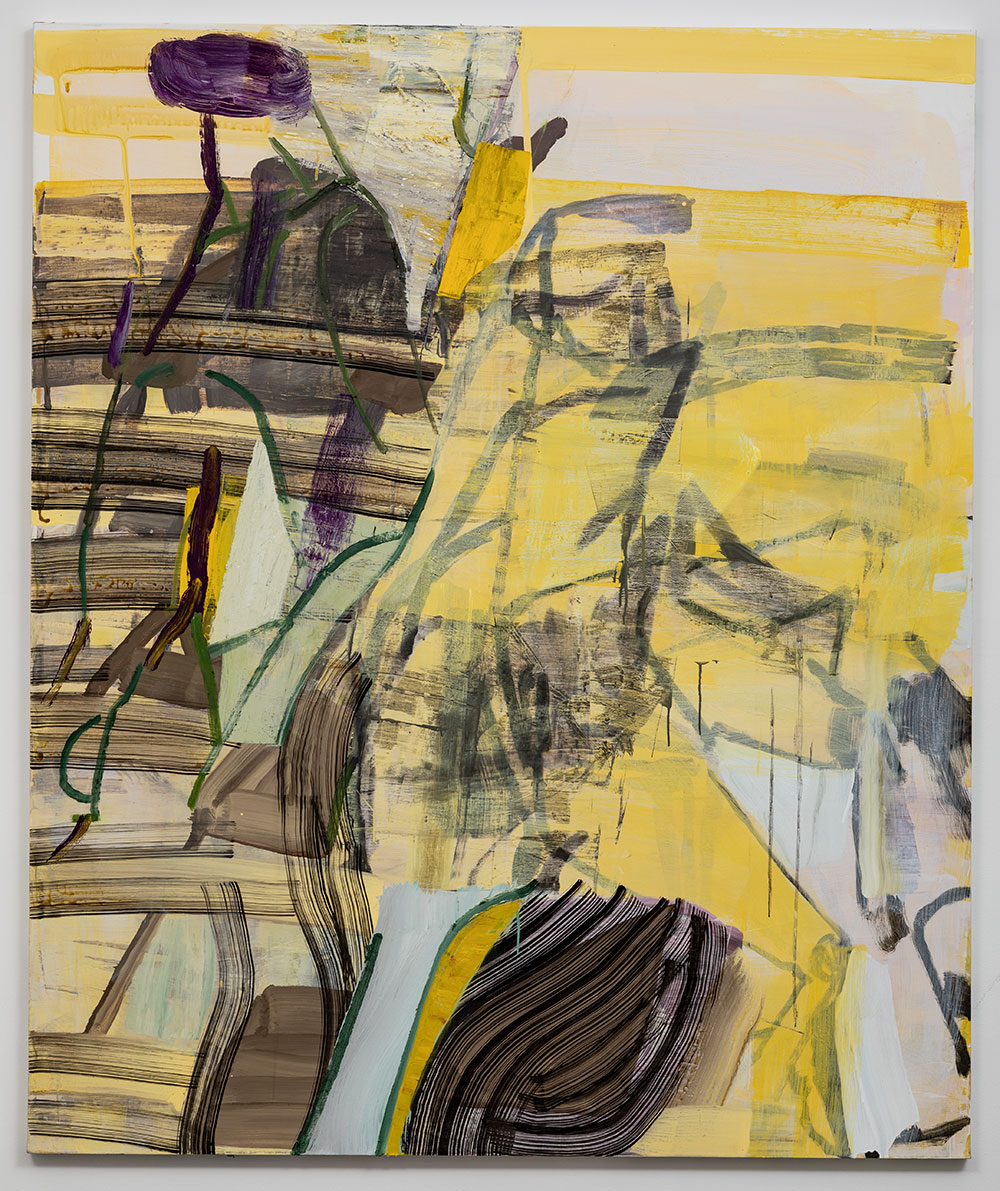One of the foremost American painters of the twenty-first century, Amy Sillman (Born 1955 in Detroit) pushes gestural abstract painting into new realms to examine the full range of human emotions. Known for active brushwork, improvisation, and riotous colors, Sillman’s work has been part of a reinvigoration of abstract painting alongside artists such as Laura Owens and Julie Mehretu. In addition to being a committed and skilled painter, Sillman is known for her mentorship of younger artists, her engagement with political criticism, and her three-decades-long career as a working artist.
Layered and supercharged, Split was painted during the summer of 2020 amid the Covid-19 pandemic and stay-at-home advisories. Predominantly goldenrod yellow with white, black, green, and deep purples, the painting displays many of Sillman’s distinctive moves, especially her use of visible gestures and scraping, to build up and then remove elements from the composition. Unique to this recent body of work is the presence of flowers, a motif the artist recounts as the subject of recent daily drawings made at her kitchen table. A purple blossom in the top left of Split gives way to vertical lines suggestive of stems. Describing the energy she hopes to capture through this body of work, Sillman writes: “The world’s ground was shifting, so I started concentrating on the fields behind the figures—patterns, plaids, and confusing figure-to-grounds, a purposefully destabilized signal-to-noise ratio.” Split appears to be bifurcated at an angle: the left side is marked with a certain clarity of dark horizontal lines painted with a wide brush, while the right side is obscured by a murky collection of shapes not yet or no longer visible. The two sides suggest differing views of the same scene, perhaps indicative of the divisiveness that marks our political sphere. The painting holds a feeling of being unfinished, with Sillman leaving parts highly detailed and yet abruptly cut off, as if she had thought to complete it but then decided against it. This sense of being in process or improvising a yet fully realized scene is perhaps one of Sillman’s most unique contributions to expressive painting today.
